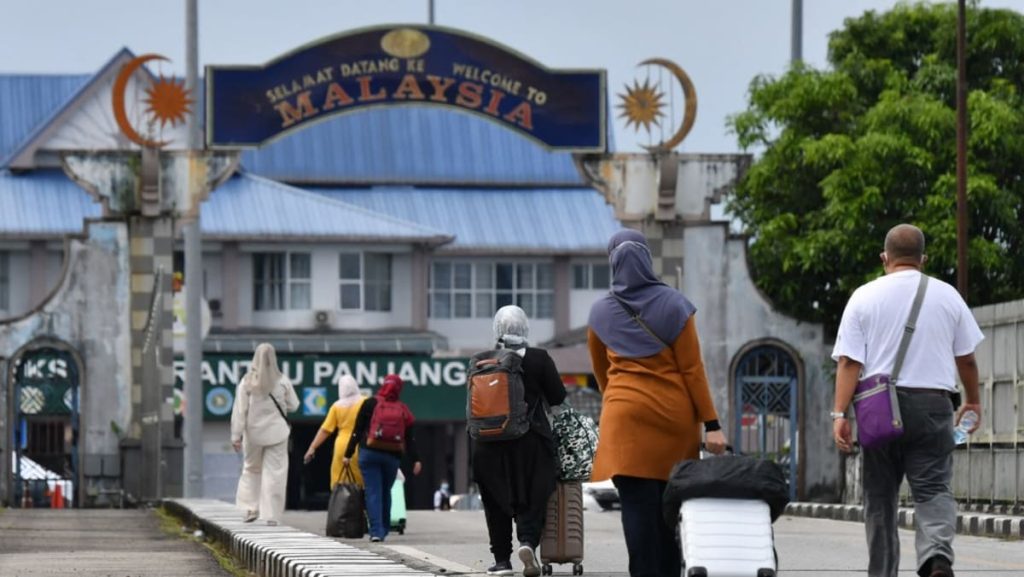Malaysia’s Migrant Repatriation Programme, implemented between March 1 and December 31 of the same year, offered a streamlined pathway for undocumented foreign nationals to return home. This initiative aimed to address the substantial population of undocumented migrants in the country, estimated by the World Bank to be between 1.2 and 3.5 million individuals between 2018 and 2020. By paying a nominal fine, significantly lower than potential penalties under standard immigration enforcement procedures, these individuals could avoid the risks and uncertainties associated with undocumented status, such as detention and deportation. The programme attracted a significant number of applicants, with approximately 27,000 individuals taking advantage of this opportunity and contributing over RM13.12 million (US$2.96 million) in fines by early December. The programme underscores the Malaysian government’s attempt to manage its migrant population while providing a humane exit strategy for those residing in the country illegally.
The mechanics of the Repatriation Programme were designed for simplicity and accessibility. Applicants were required to pay a modest fine ranging from RM300 to RM500, contingent upon the specific immigration infraction committed. Common violations included overstaying visas and breaching visa conditions. In addition to the fine, applicants needed to present valid travel documents, such as a passport, and confirm their departure arrangements with a pre-purchased flight ticket. The programme aimed to facilitate a swift and uncomplicated return process. To prevent exploitation and ensure transparency, the Immigration Department emphasized that applications could only be submitted directly by the individuals concerned, prohibiting the involvement of third-party agents or intermediaries. This direct application process served to protect vulnerable migrants from potential scams or exploitation.
The Repatriation Programme garnered substantial interest, processing over 350 applications daily. This high volume of applications highlights the significant demand for such a program among the undocumented migrant population. The experiences of individuals like Yogendra, a 26-year-old Nepali worker, and Zainuddin, a 37-year-old Indonesian plantation worker, illustrate the program’s practical impact. Yogendra, facing passport expiry, found the programme a safe and affordable way to return home, avoiding potential detention. Zainuddin, who had been working without a valid permit, travelled from Johor to Terengganu to apply, highlighting the lengths individuals were willing to go to access the programme and avoid longer queues in larger cities. Their stories underscore the programme’s role in providing a practical solution for migrants facing various immigration challenges.
The significance of the Migrant Repatriation Programme extends beyond its immediate impact on individual migrants. It represents a broader effort by the Malaysian government to manage its substantial migrant population, a significant portion of whom are employed in critical sectors of the Malaysian economy. These sectors, often characterized by 3D jobs – dirty, dangerous, and demeaning – rely heavily on migrant labor. Industries such as construction, agriculture, and manufacturing depend on this workforce, and undocumented migrants often fill these roles. The programme, therefore, indirectly impacts these industries by facilitating the departure of a portion of their workforce. Simultaneously, it offers a controlled mechanism for managing undocumented migration, distinct from more forceful and potentially disruptive enforcement measures.
The programme’s design reflects a balance between enforcement and facilitation. While it penalizes individuals for immigration violations through the imposition of fines, it also provides a clearly defined and accessible pathway for regularization and voluntary departure. This approach contrasts with stricter enforcement-focused strategies, which can lead to detention, deportation, and potential human rights concerns. By offering a less punitive option, the programme encourages undocumented migrants to come forward and resolve their immigration status, thereby potentially minimizing the risks associated with remaining undocumented. This approach also allows the government to gather data and better understand the dynamics of undocumented migration, informing future policy decisions.
In conclusion, Malaysia’s Migrant Repatriation Programme represents a nuanced approach to managing undocumented migration. By offering a streamlined and relatively affordable pathway for individuals to return home, the programme addresses both the needs of the migrants and the government’s interest in regulating its migrant population. The high volume of applications demonstrates the significant demand for such a programme, while individual stories highlight its practical benefits for those seeking a safe and legal departure. The initiative’s impact extends beyond individual cases, influencing key sectors of the Malaysian economy reliant on migrant labor and providing a more humane and manageable approach to addressing the complex issue of undocumented migration. While the programme does not solve all the challenges associated with undocumented migration, it offers a valuable model for managing this complex issue, balancing enforcement with facilitation and prioritizing a humane approach.

